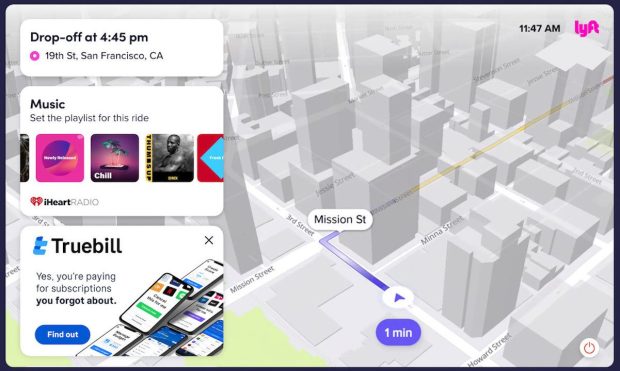Lyft Launches Advertising Unit With Suite of Products

Lyft is introducing a media and advertising unit with a suite of products designed to help brands reach the growing number of people using rideshare services again now that the pandemic is mostly in the rearview mirror.
The company has been working to build out its media business and has developed new products and established strategic partnerships, with more plans in the works, according to a company blog post Monday (Aug. 8).
“Our vision is to build the world’s largest transportation media network, delivering value to advertisers while also elevating the platform experience for riders and drivers,” Lyft said in its announcement.
Rooftop ads, in-car tablet messaging, bike docking station displays and Lyft Skins on the app are all being integrated and expanded in new ways to connect brands with riders.
See also: Lyft Buys Halo Cars In To Help Drivers Make Money Through Ads
Lyft acquired rooftop advertising startup Halo Cars two years ago and introduced Lyft Halo, the company’s first move to generate revenue outside of its core business offering, PYMNTS reported in February 2020.
Lyft Halo now offers ad messaging on rooftop screens in New York City, Los Angeles and Washington, D.C., with more cities being added soon. The offering scaled to become among the biggest rooftop advertising networks in the country, according to the post.
The company posted second-quarter revenue at $990.7 million, up from $765 million in the same quarter in 2021, with the highest Adjusted EBITDA in Lyft’s history, PYMNTS reported last week.
Read more: Lyft Shares Up on Rides Demand Surge
With positive earnings and increased ridership, Lyft is also expanding its in-car tablet program, which offers perks to both riders and advertisers. The tablets enable riders to track their ride’s progress, rate and tip drivers and control music through a partnership with iHeartRadio, according to the blog post.
Brands can serve dynamic content to riders during the trip and get cost-per-acquisitions (CPA) that are an estimated 60% less than other digital platforms in 2022.
“For riders, 1 in 4 engaged with the tablet during their ride, and 98% rated the experience as positive or neutral. And for drivers, tips increased by an average of 28% per ride while using the tablet in Q4 2021,” Lyft said in its post.
In-car tablets were piloted successfully in Los Angeles and by the end of the year, Lyft plans to have 25% of cars using tablets in Chicago, San Francisco, and Washington, D.C.
